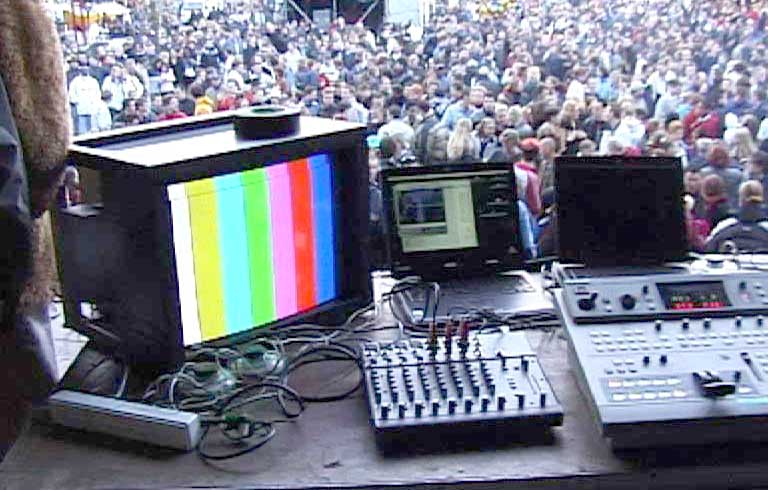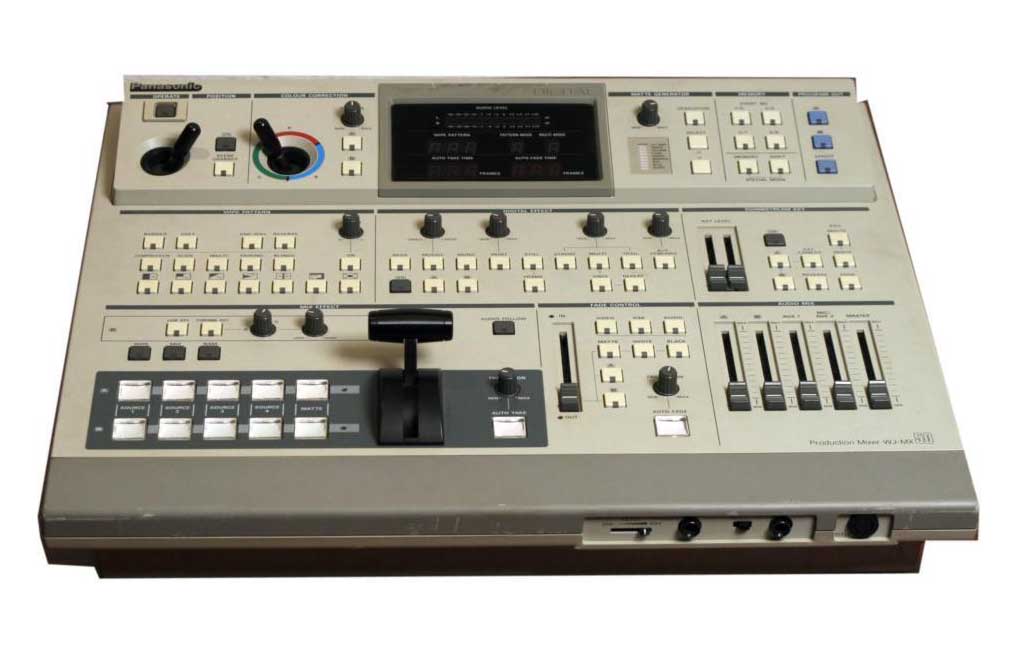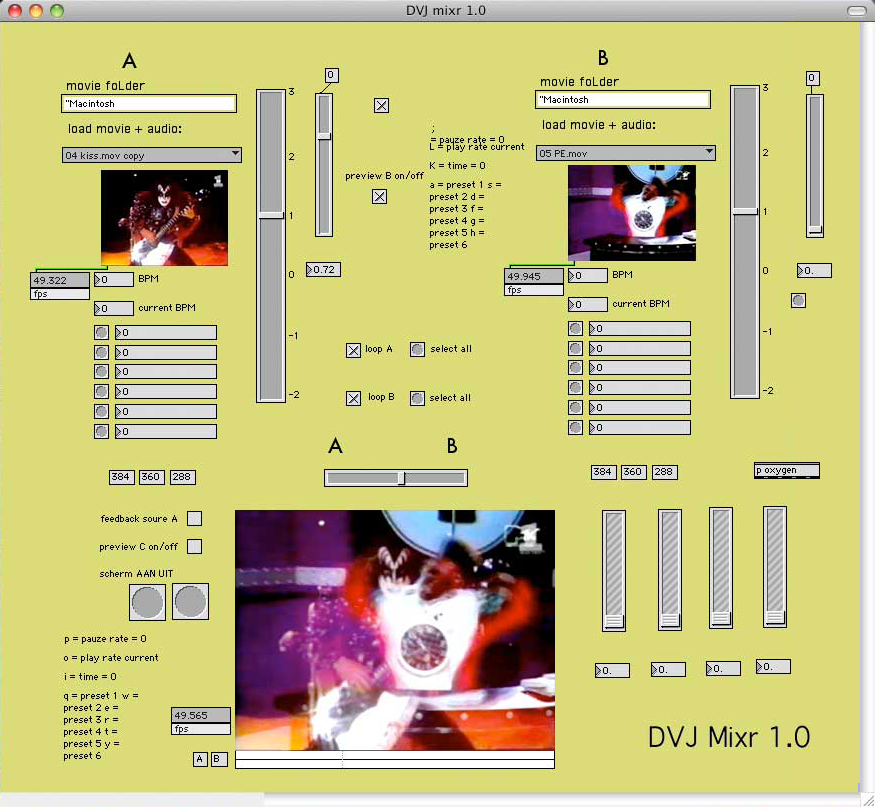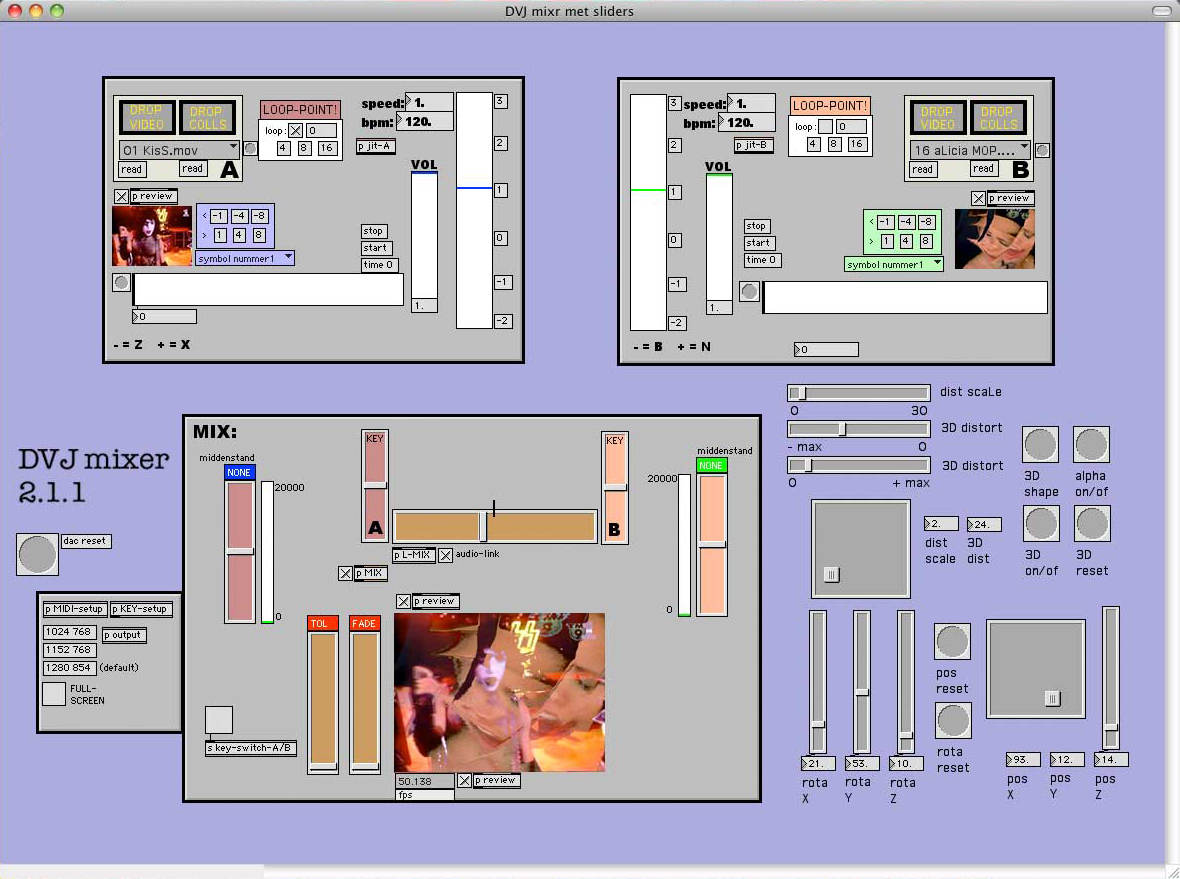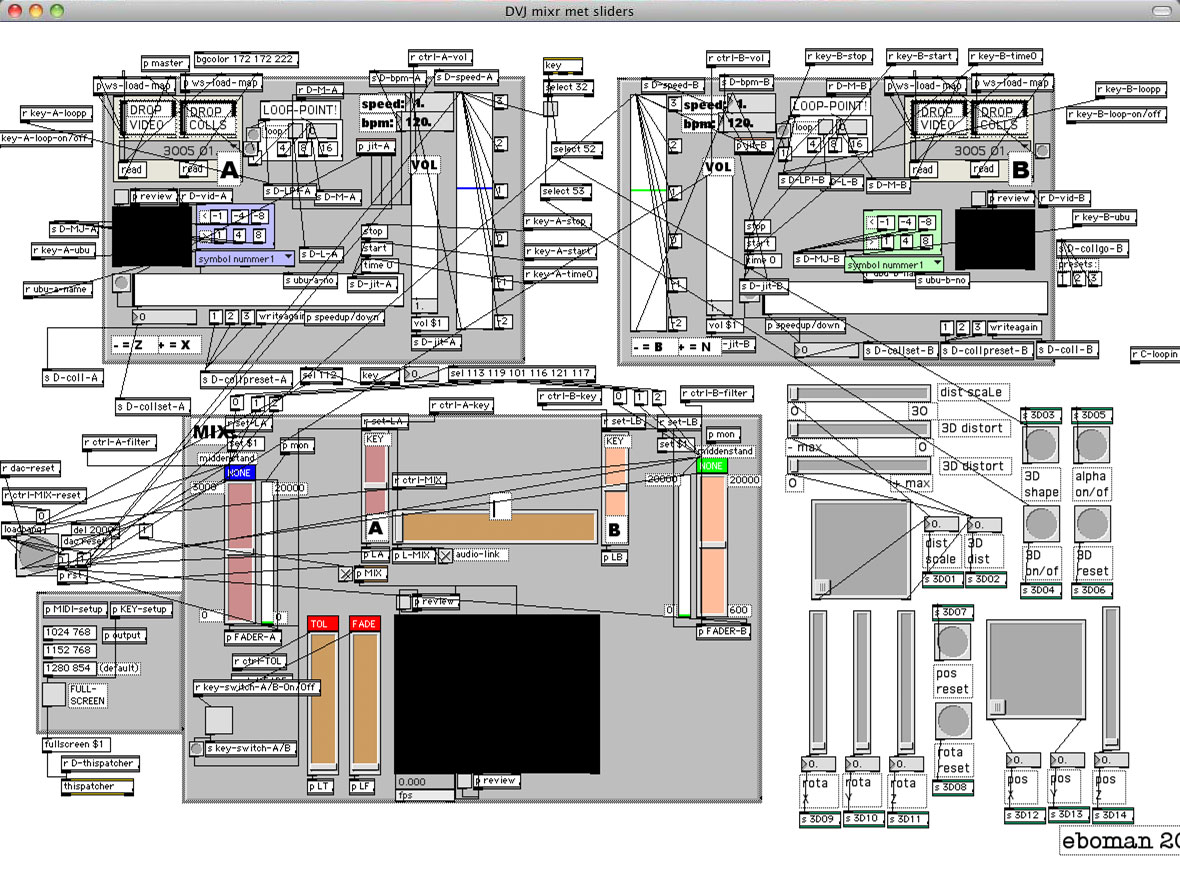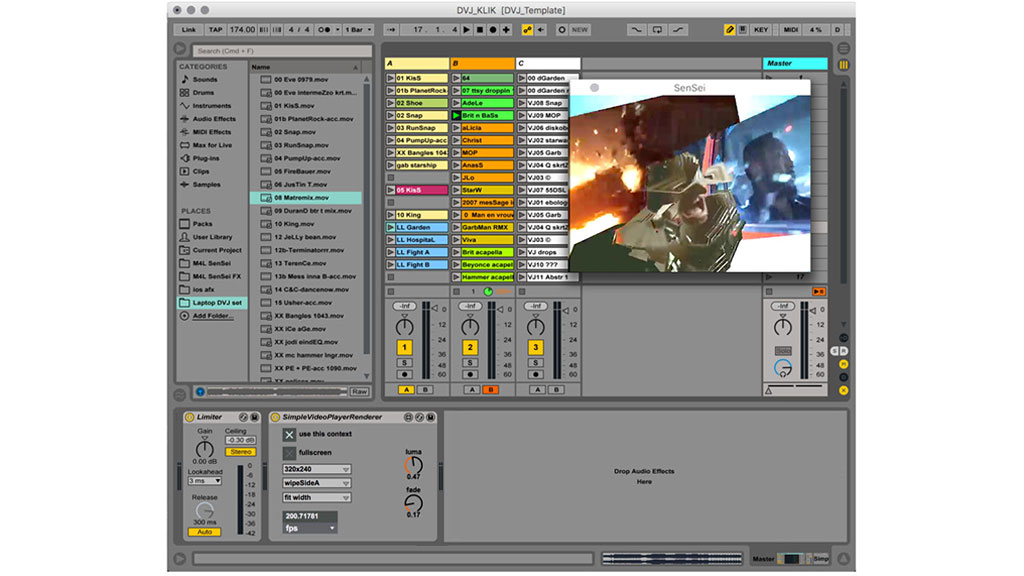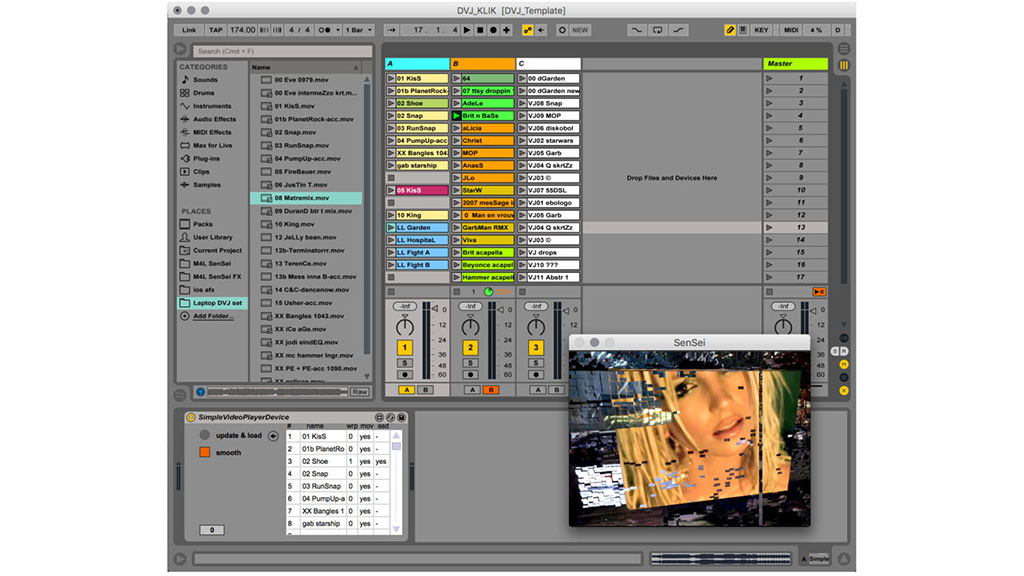In 2002, I developed a software DVJ mixer with EboStudio. I have been doing performances as a DVJ since 1999. I used to perform with two laptops and a big, analogue video mixer and a separate audio mixer. Thanks to the DVJ mixer I could do my performances with just one laptop, use audio-visual effects live and make more creative mixes.
About
From 1999 to 2002 I did my DVJ shows with two laptops and a Panasonic MX-50 video mixer. That mixer was a nice machine with some basic video effects. Feeding the visual output back into the mixer created a nice video feedback effect. I used basic video playback software on the laptops (QuickTime Player) and sometimes added a third laptop to do some ‘scrubbing’ and live video triggering on top of the mix with Image/ine.
Doing my DVJ sets became much easier and more fun after I developed my own DVJ mixing software with Max. I had been using Max since 1999 and had created some basic video software with NATO.0+55+3d, an experimental suite of externals that added extensive real-time video control to Max. NATO.0+55+3d was pretty instable, but when ‘Jitter’ was launched, an official suite of visual externals, I could make proper DVJ software.
DVJ mixer 1.0
DVJ mixer 2.0
The second version of the DVJ mixer added 3D visual effects, which was a lot of fun. I also used this feature to create visual effects for LLibb LLik and the DVJ 3.0 tracks.
This mixer also had the ability to loop a part of the video, ‘scrub’ a video live and to change the speed according to a target BPM.
DVJ mixer 3.0
The DVJ mixer eventually evolved into my audio-visual instrument SenS, which became EboSuite. In 2013 I produced a follow-up DVJ mixer: DVJ mixer 3.0. Read more about the DVJ mixer 3.0 on the project page.
Team
Produced and developed by:
- Jeroen Hofs
- Aart Muis


